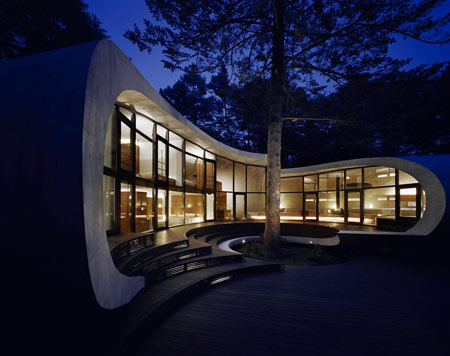
SHELL
A shell-shaped structure is large in the middle of the forest. It is difficult to determine exactly what the structure is, unlike the surrounding caves and rocks, is clearly not part of nature - nor is it a ruin. A picture, a picture, made in a completely different place for a completely different order. Within this shell-shaped structure is a constructed floors, wall of separation space and furnished. SF The landscape evokes a film-like image, which the locals live in more than a deserted spaceship. Over time, the trees begin to grow around the ship, its alignment with the landscape.
Wanting a place that is often occupied for many years and yet at the same time be in harmony with nature, we find the above scenario of a large shell structure floating above the ground.
Being in sync with nature is not to yield to nature - it is coexistence. The existence of the structure depends on its power to resist nature. By isolating the space of desert life and improve their quality of shelter, the house will be protected from nature and a comfortable atmosphere. With this, the home will be carefully and frequent and continuous use. Specifically in the case of the villas, frequent use is leading to blend in with its surroundings.
Shell is a vacation house in Karuizawa, Japan.
The two-story concrete house consists of two tubes with oval sections, arranged around a fir tree.
The floor is raised 1.4 meters from the ground, the architects intended to minimize the time spent on maintenance of the property by the separation of the house of their natural environment.
"Being in tune with nature is not to yield to nature - it is the coexistence," said Kotaro Ide of ARTechnic. "The existence of the structure depends on its ability to withstand nature."
Photographs of Nacas & Partners Inc.
Temperatures of the lowlands and high humidity makes the harsh climate. As a result, many homes they have in traditional structures are in decline. Are you in tune with nature? Maybe. But the idea of comfort seems to be called into question. Consequently, a large number of villages have not been in use for many years to lower them further deterioration. Despite the overall prevention of concrete material in the region, its use and structure has helped to raise the town to protect from moisture.
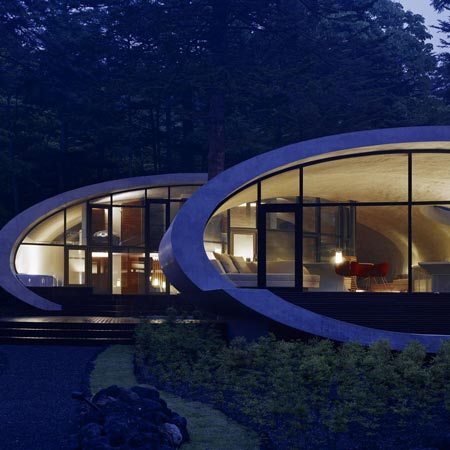
Leaving the border between human life and the ambiguous nature is a virtue Japanese. However, this ideal can only be achieved through meticulous attention and care of nature on a daily basis. This might be possible in our homes, but the theory is not a practice when applied to the villas. If a visit to the village will inevitably lead to hours and days of maintenance, why bother going? Is clearly going against the purpose of a villa. Having a type of living space that blends with nature could be attractive, but it seems natural to consider this option only when one is willing to spend only a moment of great maintenance.
Needless to say, villas not only be functional spaces for the weekend. Its main objective is to provide us with a good rest, leisure, and beautiful views that will never become bored - In the surroundings of nature. In the style of many modern sculptures, which aimed to improve the surrounding nature by incorporating into the spatial structure.
Description of the mechanical system
For the home is actually used, pay attention to your comfort and ultimate performance level.
With its classic status as a resort, many old villas in Karuizawa take traditional styles, from the time when visitors arrived with the intention to stay at least a month. Never mind that one or two days had to be spent on home maintenance, given the long stay. With the arrival of the Shinkansen high speed rail, Karuizawa is nothing more than an hour and 10 minutes from Tokyo - only to visit Karuizawa weekend has become a norm today. A short visit calls with a shorter duration of maintenance.
The central control system enables all mechanical and electrical equipment to be operated by three buttons. In addition, locks and biometric security system will reduce anxiety and stress on the safety management of the house. The installation of custom made floor heating system minimizes the use of thermal energy to avoid the hassle of emptying the drainage in cold regions.
It is also very effective in the prevention of mold. It also works as a cooling system that can block the project to enjoy the luxury of a considerable amount of space with large openings. The system is integrated into architectural form.
Assuming future maintenance interior and equipment (including sash) for continuous use, the frame is completely independent. The structure is supposed to assimilate their environment over time. To provide efficiency during maintenance, exposed concrete, finished with a penetrating sealer for concrete.
Description of the composition of the construction
The plan was to build the village around the big spruce tree as the center of the site, with a row of pine trees in the main view. Initially, we had planned to build a layered structure with three-dimensional curved surfaces, and the C-shaped section was to surround the spruce and the plane of the building looked like the letter J.
In addition, parts were planned to maintain the double volume space. However, reviewing the budget method of construction and finishing, the plan was revised down to a layered structure of two-dimensional curved surfaces. The J-shaped structure built in two different sizes of cylindrical bodies with oval cut corners.
The straight part of J, a smaller mass is connected to a J-curve shape, a larger mass. The top of the oval building thick walls of 350 mm and its width increases continuously up to 750 mm on both sides to meet structural requirements.
The free curved lines appear on the edge and the curved surface in three dimensions with a sprained hand, appears in the cut surface. But the whole structure was composed of two-dimensional curved surfaces.
The floor is built above ground 1400mm, with the lower half of the layered structure that stick out to the outside, supporting the roof of the same height.
All air vents and exhaust are installed below the band, letting the outside air through the grill on the terrace. Furthermore, by designing the windows fixed, try to maximize natural ventilation (which have not fixed the air conditioning in general). Although at first glance, the oval space in a cylinder may appear as a waste of space, the functional use of space is maximized by the installation of furniture in the lower half of the oval cylinder.
Fountain: Dezeen.
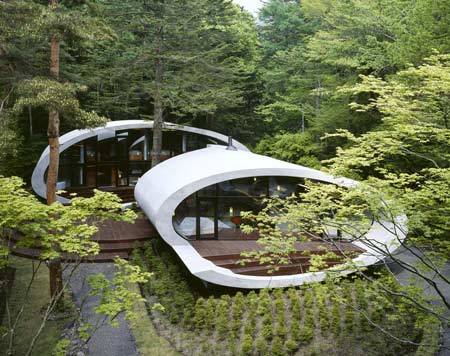
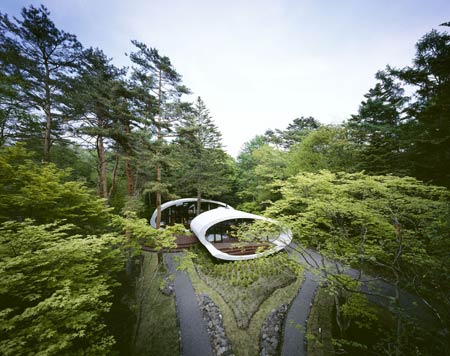
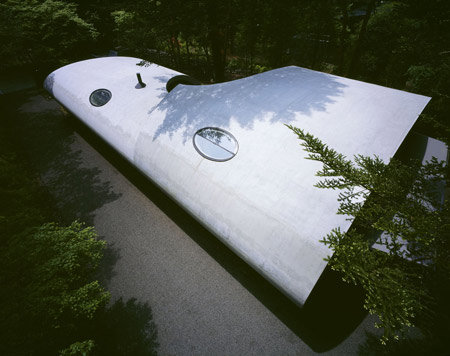
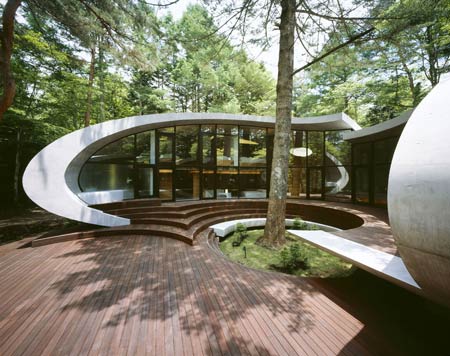
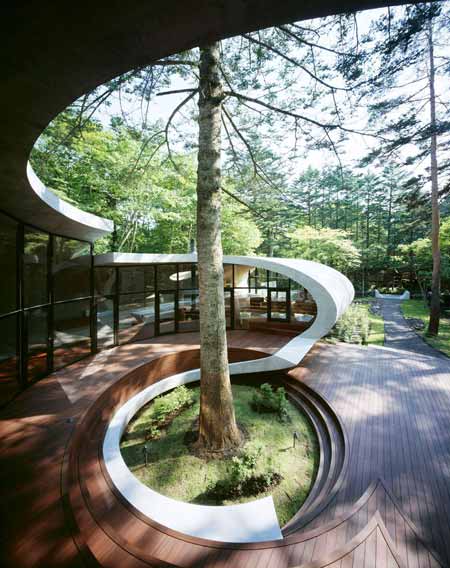
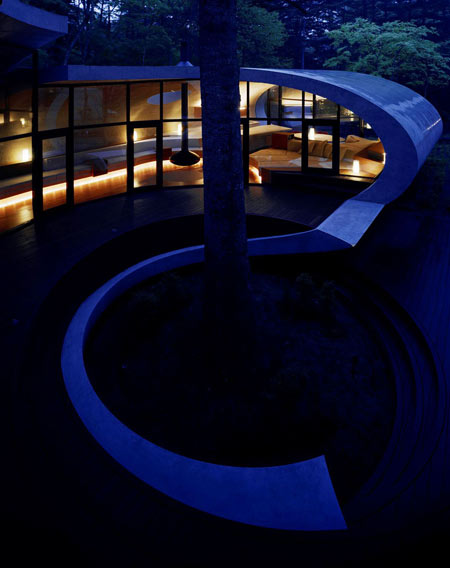
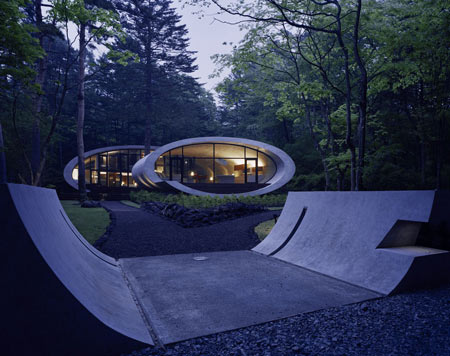
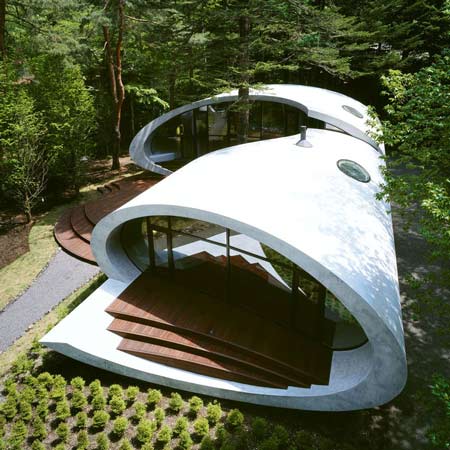
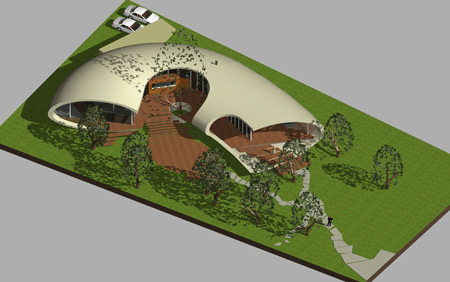
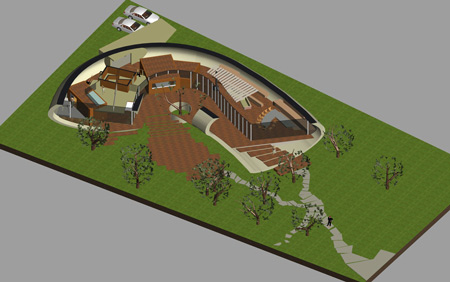
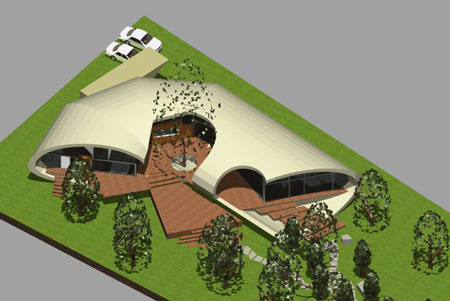
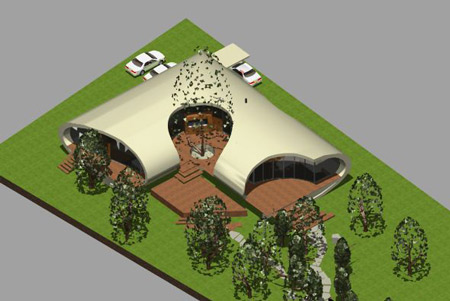
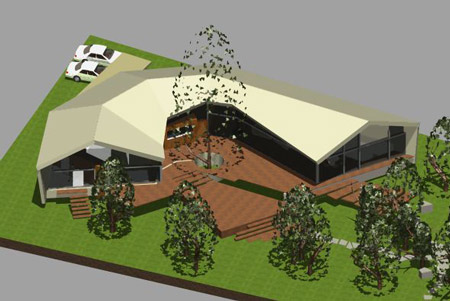
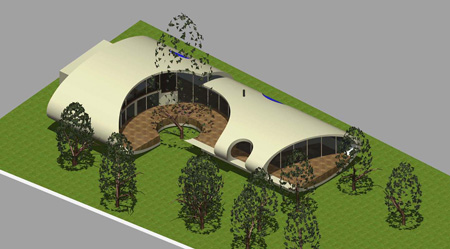
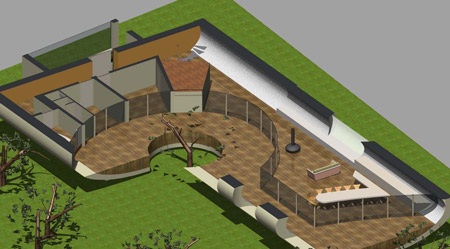
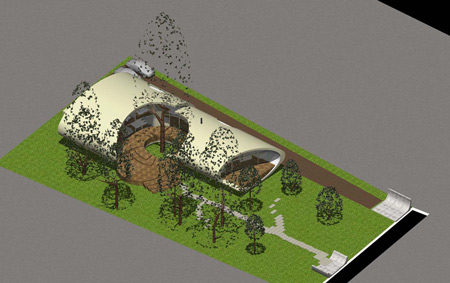
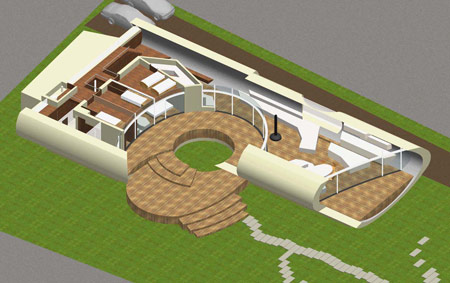
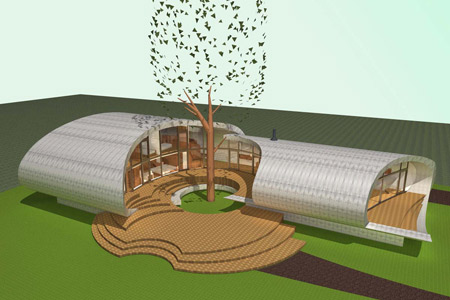
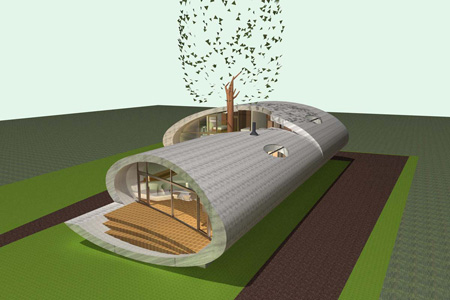
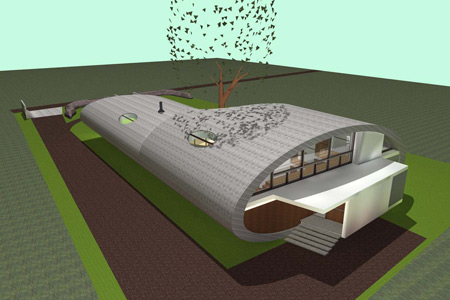
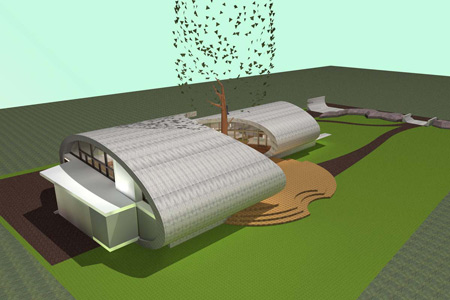
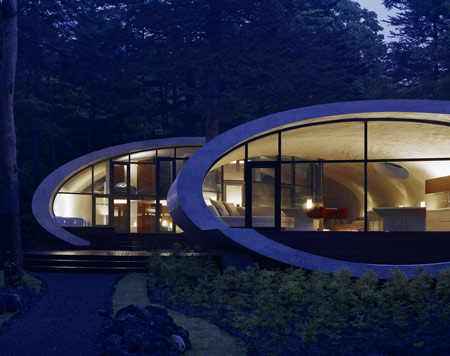
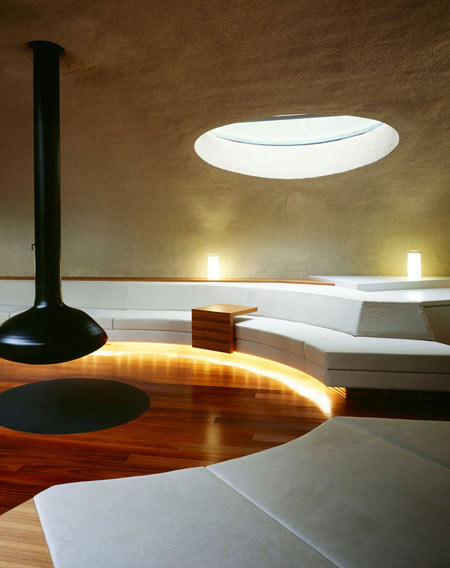
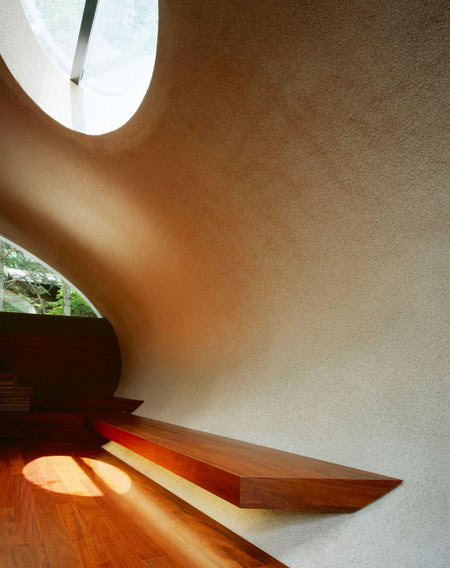
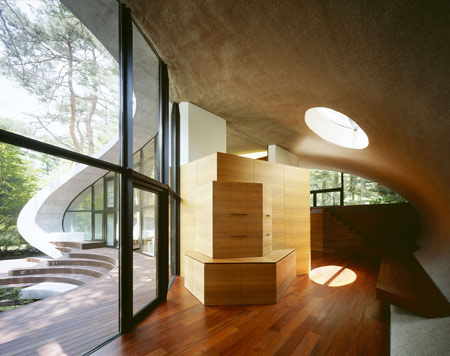
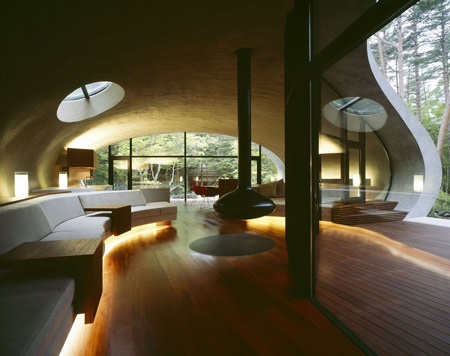
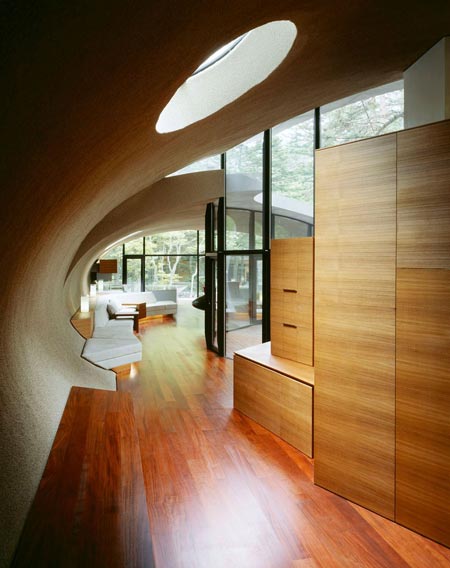
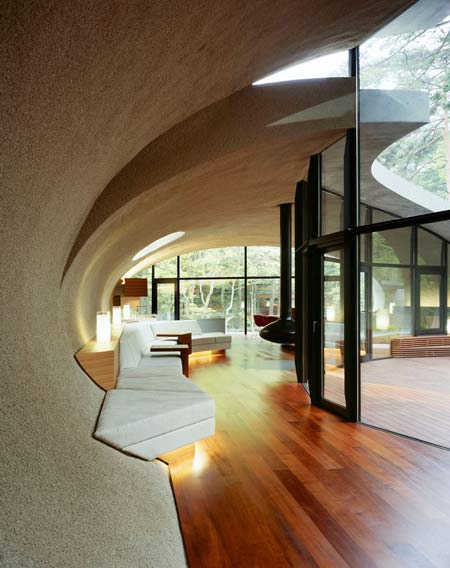
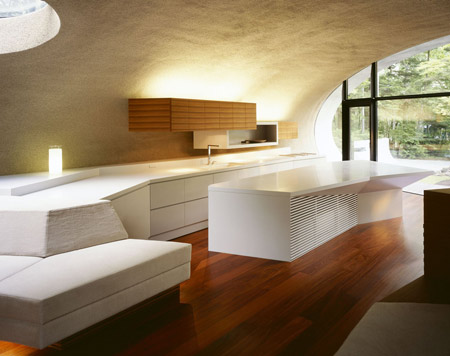
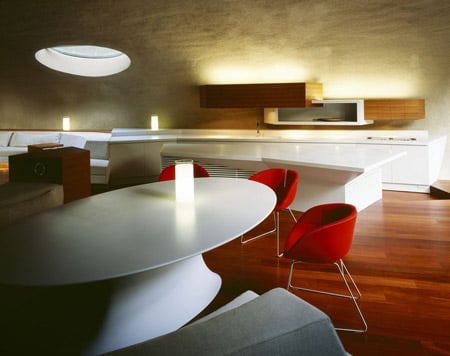
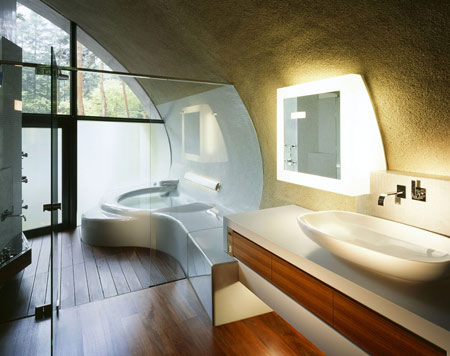
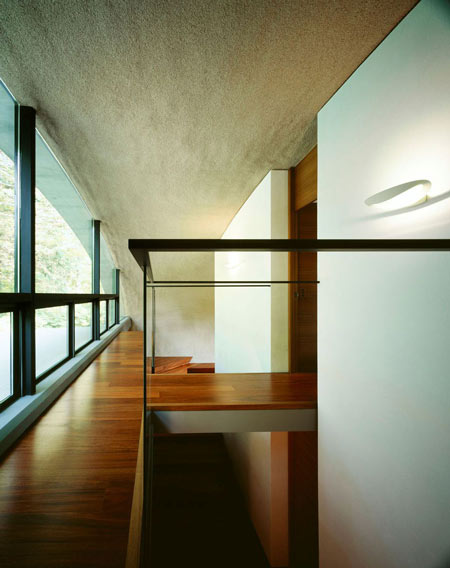
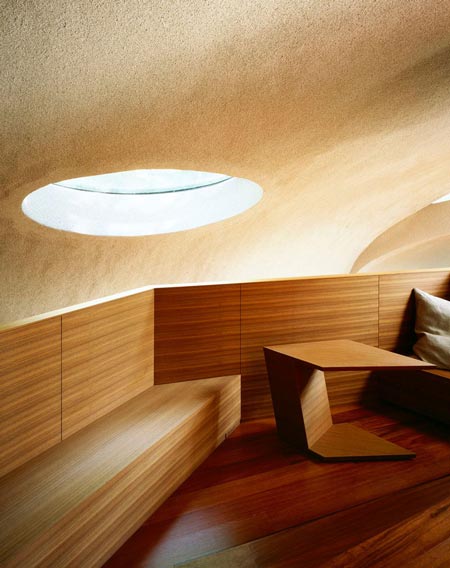
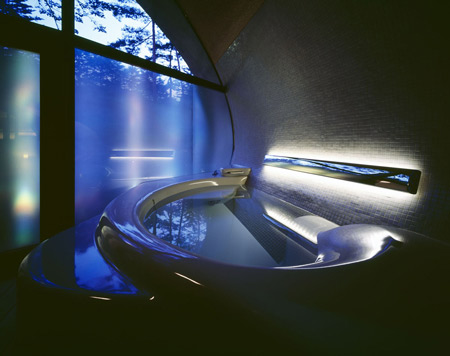
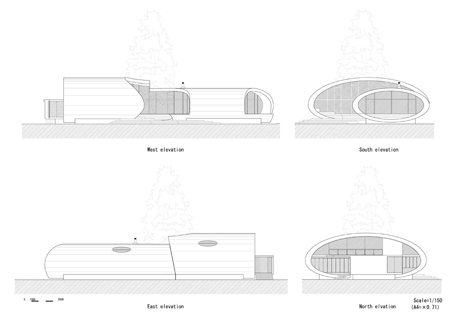
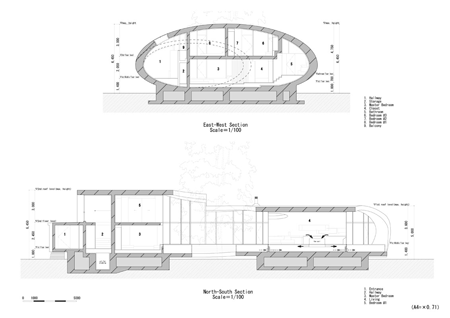
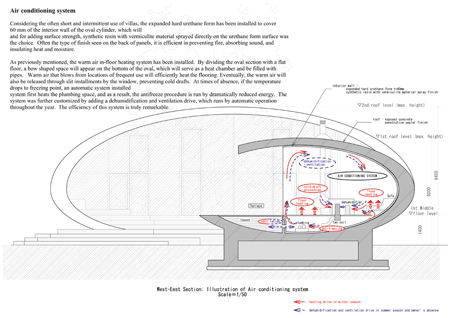
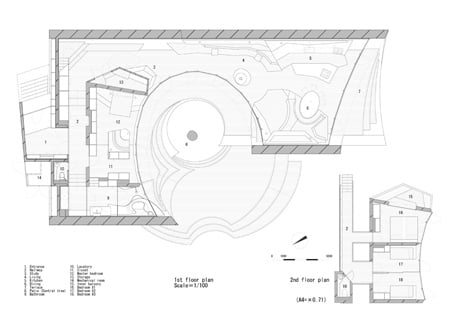
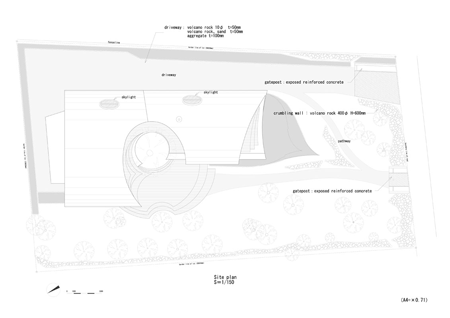
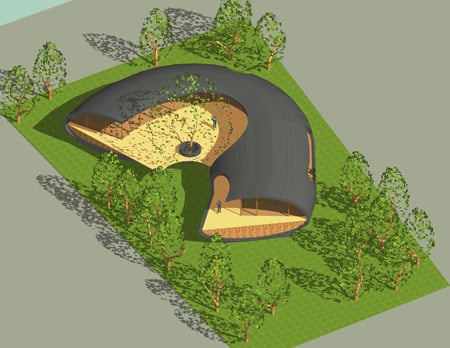
Project title: SHELL
Architects: Kotaro Ide / ARTechnic architects
Assistants : Moriyuki Fujihara・Ruri Mitsuyasu・Takashi Mototani (former member) Kenyu Fujii
Collaborator: ManamiIde (designer of customized metal work)
Structural engineer: Naomi Kitayama / NAO
Mechanical engineer: Hiroshi Nakayama / TNA
Electrical engineer: Jyunetsu Satou / EPS
Constructor: Kenji Kusunoki / GIKAKU
Client: Mr.Kunimoto
Location: Karuizawa, Kitasaku, Nagano
Principal use: Private villa
Structure: Reinforced concrete
Foundation: Spread foundation
Architects: Kotaro Ide / ARTechnic architects
Assistants : Moriyuki Fujihara・Ruri Mitsuyasu・Takashi Mototani (former member) Kenyu Fujii
Collaborator: ManamiIde (designer of customized metal work)
Structural engineer: Naomi Kitayama / NAO
Mechanical engineer: Hiroshi Nakayama / TNA
Electrical engineer: Jyunetsu Satou / EPS
Constructor: Kenji Kusunoki / GIKAKU
Client: Mr.Kunimoto
Location: Karuizawa, Kitasaku, Nagano
Principal use: Private villa
Structure: Reinforced concrete
Foundation: Spread foundation
Building scale:
- 2stories / Maximum height 6.45m
- Site area: 1711.03㎡
- Building area: 274.38㎡ (building coverage ratio 16.04% legal max.20%)
- Total floor area: 329.65㎡ (floor area ratio 19.27% legal max.20%)
- 1st floor: 267.80㎡
- 2nd floor: 61.85㎡
- Roof and exterior walls: Exposed concrete with penetrative sealer finish
- Roof and exterior walls (entrance): Exposed concrete with penetrative sealer and heat insulating paint finish
- Openings: Steel and aluminum sash
- Terrace flooring: Ulin flooring t=20mm with penetrative paint finish
- Ceiling and interior walls: Expanded hard urethane form t=60mm with synthetic resin with vermiculite material spray finish
- Ceiling and interior walls (entrance): Heat insulating paint finish
- Ceiling and interior walls (double volume space): Plastered finish
- Interior walls (a part): Teak plywood with oil finish
- Flooring: Ulin flooring t=15mm
- Flooring (entrance concrete floor): Concrete exposed-aggregate finish by washing with color paint finish.
















